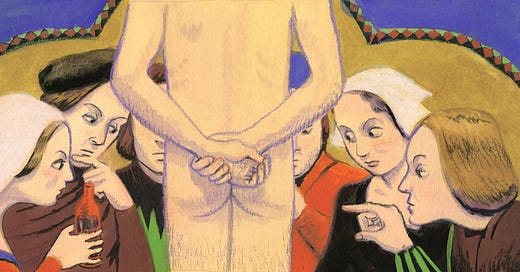The Distinguished Medieval Penis Investigators
In fourteenth-century England, one of the only ways a woman could get a divorce was if her husband was impotent. But first, she had to prove it in court.
One key witness, Thomas son of Stephen, testified in church court that he had seen the couple unsuccessfully attempting to have sex in John’s father’s barn before 9 o’clock one springtime morning. In spite of the fact that John and Tedia were “applying themselves with zeal to the work of carnal intercourse,” Thomas reported that he saw “John’s rod was lowered and in no way rising or becoming erect.” Furthermore, Thomas claimed that John’s brother also witnessed the failed sexual encounter, adding that the brother stroked John’s penis with his hand in order to see if he could help.
So to summarize: John Saundirson not only tried (and failed) to have early-morning barn-sex with his wife before an audience of two men but also received ineffective manual penis stimulation from his own brother. Thanks to Thomas’s devastating testimony, Tedia won her case.
Outrageous as it seems, the case of Lambhird v. Saundirson is one of multipl…
Keep reading with a 7-day free trial
Subscribe to Narratively to keep reading this post and get 7 days of free access to the full post archives.




